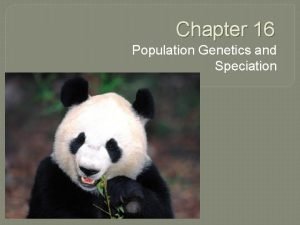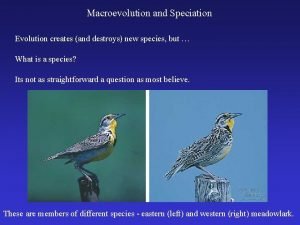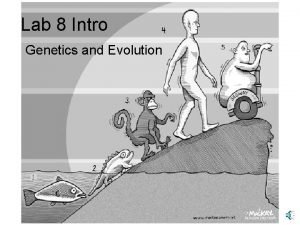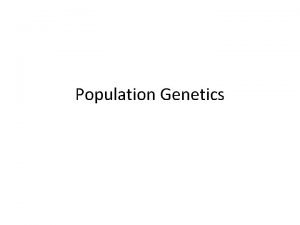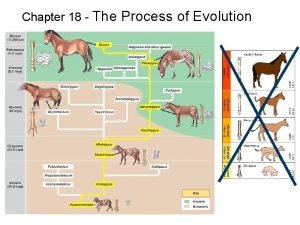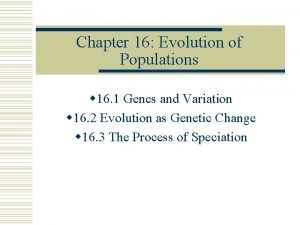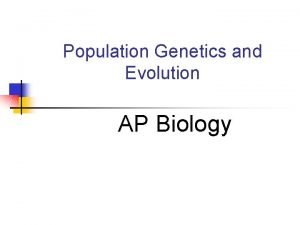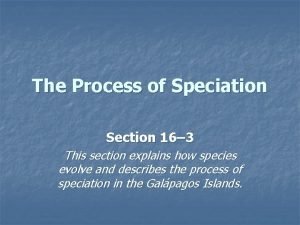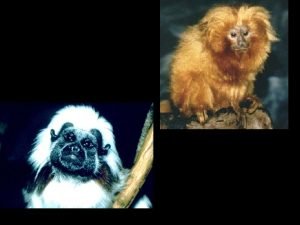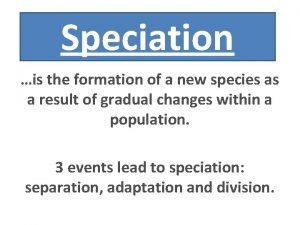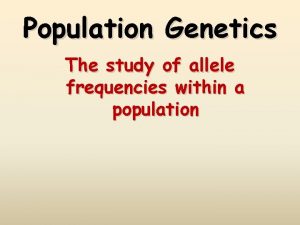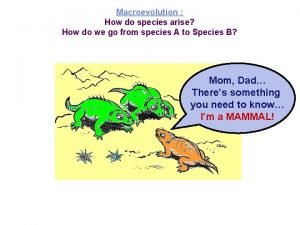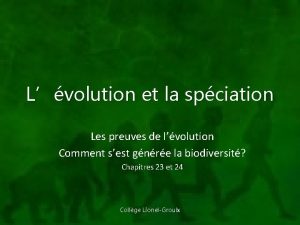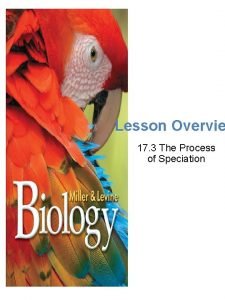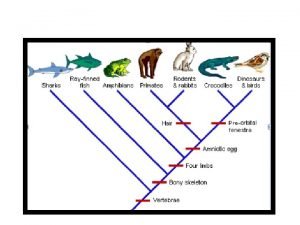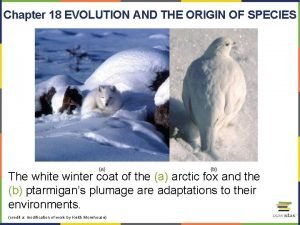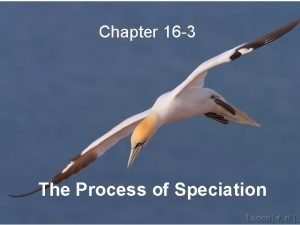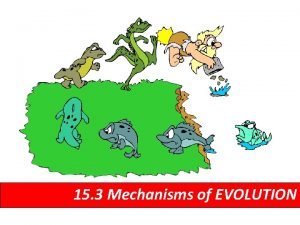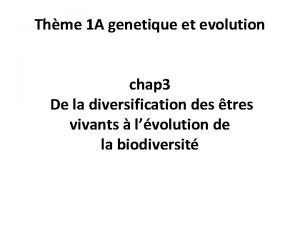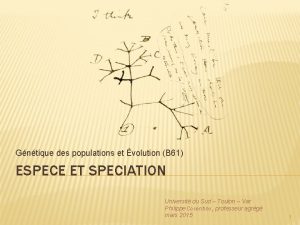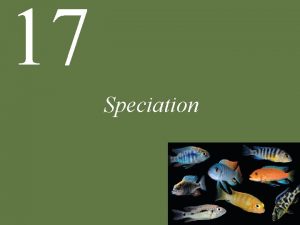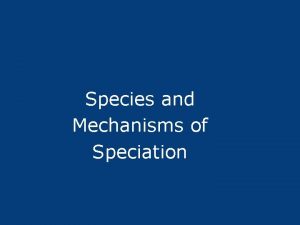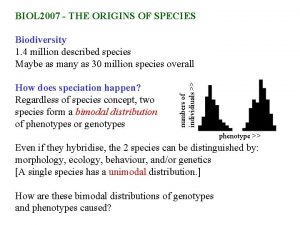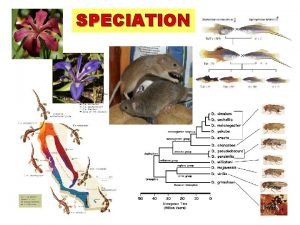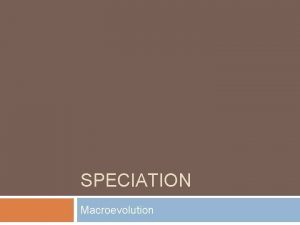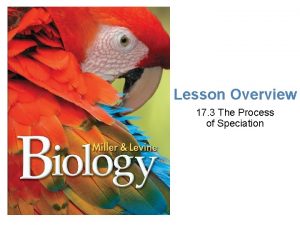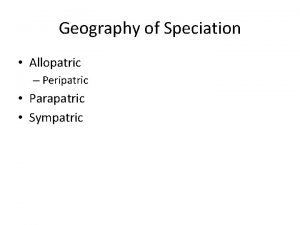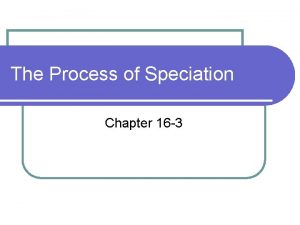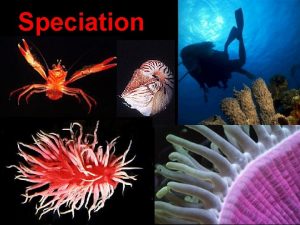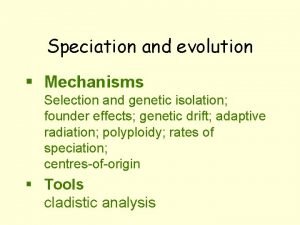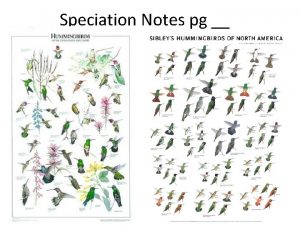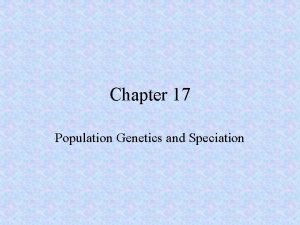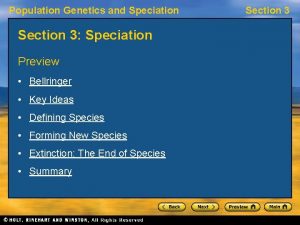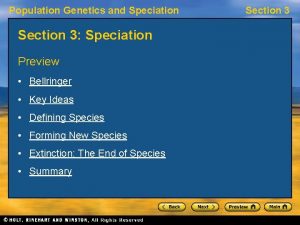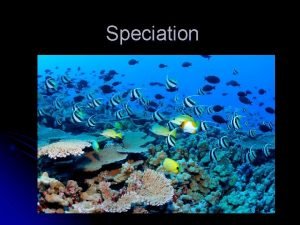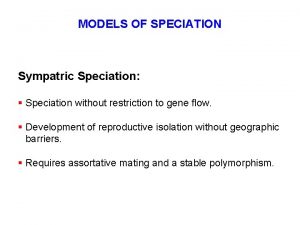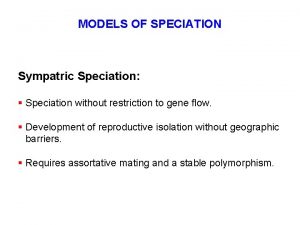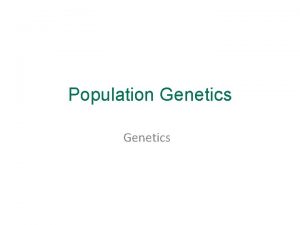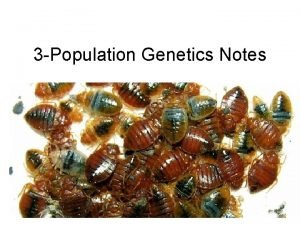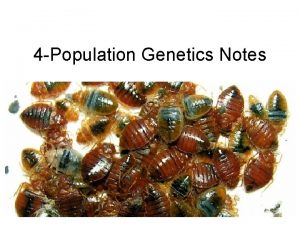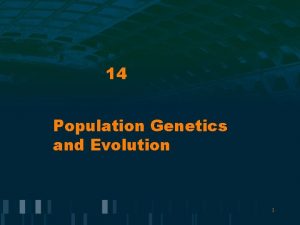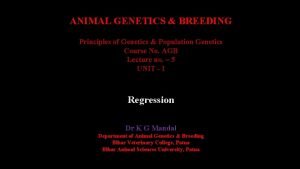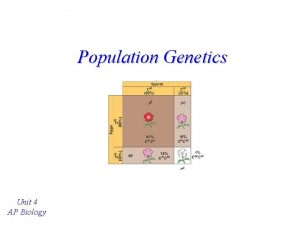Notes Pg67 Speciation and Population Genetics EQ 1









































- Slides: 41

Notes Pg#67: Speciation and Population Genetics EQ 1: What are the two types of speciation? EQ 2: What are three patterns of Evolution?

EQ: How “smart” is evolution ? 2 facts pg#67 Stop at 9. 5 min

Objective • All students will compare and contrast allopatric and sympatric speciation and understand the evidence for speciation seen in patterns of evolution.

What is a species? • A species is interbreeding populations of organisms that can produce healthy, fertile offspring.

What animals alive today are NOT technically its own species? • Why?

• Add two examples of different species on the lines of your paper

What is speciation? • Speciation is the evolution of one or more species from a single ancestor species.

Ex: Who did birds evolve come from? Are all birds around today the same species?

There are two types of speciation, they are: • Allopatric speciation • Sympatric speciation

Allopatric Speciation • In allopatric speciation, a physical barrier divides one population into two or more populations. The separate populations eventually will no longer be able to breed successfully with one another.

ex: building a freeway through a forest

Sympatric Speciation • A species evolves into a new species without a physical barrier. The ancestor species and the new species live side by side during the speciation process. • (Most commonly seen in insect and plant species). Apple Maggot Flies: Appear to be diverging based on type of fruit they eat.


Which type of speciation: allopatric or sympatric? • Palm Desert has a Costco and a Sam’s Club on the same block. Sympatric Speciation!

Which type of speciation: allopatric or sympatric? • Palm Desert & La Quinta each have a Costco store. Allopatric Speciation!

Which type of speciation: allopatric or sympatric? • There are different types of fish in tropical versus arctic oceans- all of which each algae (tiny plants). Allopatric Speciation!

Which type of speciation: allopatric or sympatric? • At a lake, there are birds that catch fish to eat when the fish come up to eat at dawn and dusk, and others that learn to dive deep into the water to find fish. Sympatric Speciation!

Which type of speciation: allopatric or sympatric? • On an island, there four different types of trees that make seeds. There are currently four different species of birds that each eat one of the types of seeds. Sympatric Speciation!

What are the 3 patterns of evolution making evidence of speciation visible? 1) Adaptive radiation/divergent evolution: When one species gives rise to many species in response to the creation of a new habitat or another ecological opportunity. Become less alike over time.


Ex: Marsupial radiation on Australia from a common ancestor with mammals. Mammals are all over the planet but Marsupials are only in Australia.

2) Convergent evolution: Natural selection has produced analogous (similar) adaptations in response to similar environments.

Similar traits can develop in unrelated species occupying comparable niches

niche: The role or function of an organism or species in an ecosystem. Ex: The niche of a vulture is what? Ex: The niche of krill is what? Ex: The niche of bacteria & fungi is what?


3) Coevolution: Over millions of years, species that interact closely often adapt to one another.



Gene pool • Combined genetic material of all the members of a given population. All patterns of evolution involve changes in the gene pool.

Allele Frequency • In any gene pool, the number of each allele is a fraction of all the genes for a particular trait. (% or fraction) (Remember that genes often have two or more different forms, called dominant &

Ex:

Genetic Drift Random variation in the frequency of different alleles/genotypes in a small population, owing to the chance disappearance of particular genes as individuals die or do not reproduce. Happens even if there are no evolutionary pressures to adapt. Ex: Foot doesn’t notice what color beetle it steps on, ti’s random who dies (wrong place, wrong time-but still affects the gene pool)

In Summary: New species can develop when populations become separated and isolated

3 min Darwin’s Star Orchid & Moth Coevolu tion

Interactions with other organisms affect evolution

Many diverse species can evolve from one ancestral species

Evolution results from disruptions in genetic equilibrium (balance)

The normal distribution of variations in a population can be changed by natural selection

At the bottom of your page answer the 2 EQs in complete sentences: EQ 1: What are the two types of speciation? EQ 2: What are three patterns of Evolution?

Hardy-Weinberg Principle • Under specific conditions, allele frequencies in a population remain constant from generation to generation. • Ex: If we have 75% of a population with the B allele (dominant) and 25% with b (recessive), in 100 years we would expect to see the same percentages IF a Hardy-Weinberg Equilibrium is occurring.

Conditions of Hardy Weinberg • • • 1. no natural selection 2. random mating 3. no migration 4. no mutation 5. very large populations
 Population genetics and speciation worksheet answer key
Population genetics and speciation worksheet answer key Isolating mechanism
Isolating mechanism Lab 8 population genetics and evolution
Lab 8 population genetics and evolution Genetics
Genetics Population genetics
Population genetics Population genetics
Population genetics Population genetics
Population genetics Genetics
Genetics Section 1 population dynamics answer key
Section 1 population dynamics answer key Section 1 population dynamics
Section 1 population dynamics Population ecology section 1 population dynamics
Population ecology section 1 population dynamics Chapter 4 section 1: population dynamics
Chapter 4 section 1: population dynamics Section 16–3 the process of speciation
Section 16–3 the process of speciation Speciation
Speciation Horizontal gene transfer
Horizontal gene transfer Speciation or the formation of new species is
Speciation or the formation of new species is Sympatric speciation example
Sympatric speciation example Factors affecting gene frequency slideshare
Factors affecting gene frequency slideshare Canidae cladogram
Canidae cladogram Types of speciation
Types of speciation La spéciation
La spéciation Process of speciation
Process of speciation Allopatric speciation def
Allopatric speciation def Ecological speciation
Ecological speciation Origin of species chapter 18
Origin of species chapter 18 Section 16-3 the process of speciation
Section 16-3 the process of speciation Sympatric species
Sympatric species Ecureuil antilope grand canyon
Ecureuil antilope grand canyon Scala naturae
Scala naturae Embryo development
Embryo development Speciation
Speciation Polyploidy
Polyploidy Parapatric speciation
Parapatric speciation Ring species
Ring species Speciation process
Speciation process Speciation process
Speciation process Parapatric speciation
Parapatric speciation Sympatric speciation
Sympatric speciation Section 16-3 the process of speciation answer key
Section 16-3 the process of speciation answer key Speciation modes answer key
Speciation modes answer key Parapatric speciation
Parapatric speciation Speciation
Speciation
